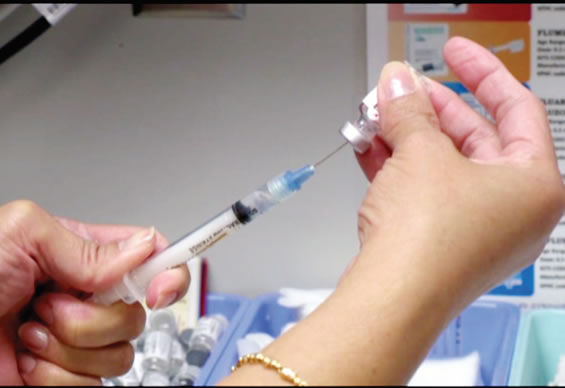Meningitis death toll hits 156, suspected cases 1,858

The death toll from cerebrospinal meningitis in Nigeria has risen to 156, up from the previous 74, according to the Nigeria Centre for Disease Control and Prevention.
The latest data, released by the NCDC on Sunday, covering week 40 of 2024 to week 12 of 2025, shows that 126 confirmed cases have been recorded out of 1,858 suspected cases across 23 states and 121 local government areas.
The national case fatality rate stands at 8.4%.
The 23 affected states include Adamawa, Akwa Ibom, Anambra, Bauchi, Bayelsa, Benue, Borno, Ebonyi, Ekiti, FCT, Gombe, Jigawa, Kano, Kaduna, Katsina, Kebbi, Niger, Ondo, Osun, Oyo, Plateau, Sokoto, and Yobe.
The states that recorded deaths are Kebbi (67); Sokoto (33); Katsina (16); Jigawa (six); Yobe (11); Bauchi (six); Gombe (nine); Borno (one); Kano (five); Adamawa (one); and Oyo (one).
The report from NCDC noted that as of March 23, 2025, “A total of 1,826 suspected cases with 151 deaths (CFR 8.3 per cent) have been reported from 23 states in the current season. A total of 289 samples were collected from some of the reported suspected cases since the beginning of the season, with 126 confirmed (44 per cent positivity rate) NmC accounts for 27 per cent, NmW 13.5 per cent, Spn 2.1 per centand NmX 0.7 per centand Hib 0.3 per cent each of the confirmed cases. Age group 5 -14 years remains most affected group. 60 per cent of the total suspected cases are Male.
“Ninety-four per cent of all suspected cases are being reported from 10 states – Kebbi (881), Katsina (158), Jigawa (147), Yobe (109), Gombe (47), Sokoto (303), Borno (36), Adamawa (27), Oyo (23) and Bauchi (66).
“Seventeen LGAs across nine states reported more than ten suspected cases in the current CSM season. Gwandu (313), Tambuwal (155), Aleiro (143), Katsina (69), Kankia (54), Sule-Tankarkar (29), Jega (61), Fune (28), Maiduguri (29), Jahun (15), Birnin kudu (13), Nafada (13), Nguru (53), Bauch (25), Gamawa (20), Taura (14), Sule-Tankarkar (30), Birnin kudu (13), Nafada (13) and Yola South (13).”
The public health institute noted that its multi-sectoral Emergency Operations Centre is coordinating response activities in collaboration with the Federal Ministry of Health, the National Primary Health Care Development Agency, the Nigerian Meteorological Agency, and development partners.
It highlighted inadequate trained personnel in states for case management (i.e., LP procedures), lack of CSM commodities some facilities, poor and inconsistent reporting from states, poor data quality, lack of active case search at secondary and tertiary facilities, late/non-reporting from communities up to the states/national levels, poor health seeking behaviour, and personal and community hygiene promotion as the challenges in tackling the outbreak.
It, however, restated commitment to maintaining communication with and support to states for data reporting and response, continuing advocacy to state governments to fund CSM Incident Action Plan for ownership and sustainability, continue distributing response commodities across states, building capacity for sample collection, transportation, laboratory diagnosis and data management, and scaling up risk communications.
Meningitis is a serious infection of the meninges, the membranes covering the brain and spinal cord. It is a devastating disease and remains a major public health challenge.
The disease can be caused by many different pathogens, including bacteria, fungi or viruses, but the highest global burden is seen with bacterial meningitis, according to the World Health Organisation.
WHO said there are four main causes of acute bacterial meningitis: meningococcus, pneumococcus, Haemophilus influenzae and Streptococcus agalactiae, also known as Group B streptococcus (GBS). Meningococcus has the most potential to produce outbreaks and large-scale epidemics. The largest burden of meningococcal meningitis occurs in the meningitis belt, an area of sub-Saharan Africa which stretches from Senegal in the west to Ethiopia in the east.
Meningococcal meningitis – an infection of the meninges, the thin lining that surrounds the brain and spinal cord – is most prevalent in Africa’s ‘meningitis belt’, which stretches across 26 countries in Africa – from Senegal in the West to Ethiopia in the East – with an at-risk population of about 500 million. Those at highest risk of infection are infants, children and young adults.
One in four survivors suffers permanent disabilities such as hearing loss, seizures, limb weakness, difficulties with vision, speech, language, memory and communication, as well as scarring and limb amputations.
Seasonal outbreaks are common during the dry season, which runs from December to June, peaking between March and April when low humidity and high dust levels prevail.
On Friday, the Federal Ministry of Health and Social Welfare received over 1,000,000 pentavalent meningococcal conjugate vaccine (Men5CV) doses from the Gavi-funded global stockpile this week to combat the meningococcus C and W outbreak in northern Nigeria.
In 2024, Nigeria was the first country in the world to roll out Men5CV, recommended by WHO, which protects people against five strains of the meningococcus bacteria.
The vaccine has the potential to reduce meningitis cases and advance progress in defeating meningitis.





